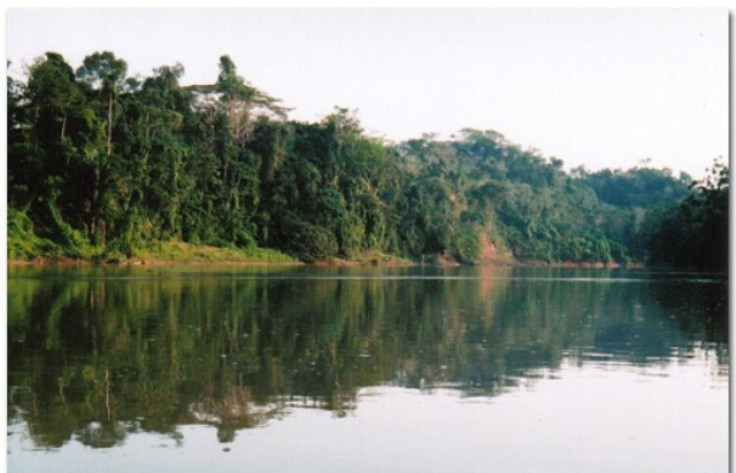5 Latin American Projects To Watch In 2014: Oil Explorations, Transoceanic Canals, And 3 Other Things That Might Change The Region

2013 was a big year for Latin America. Aside from dealing with social upheavals and financial ups and downs, the region was knee-deep into remodeling both national economies and the connections between them.
The last 12 months saw deals made on things from oil-site explorations and continent-wide highways. Here are five things to watch out for next year:
The Nicaragua Canal
Nicaragua had a dream: to build an interoceanic canal through its land, a shortcut between the Atlantic and the Pacific Oceans through which commercial ships from all over the world could pass. But back in the early 20th century, a neighboring country -- Panama -- snatched it from under the nose of the Nicaraguans. And the rest, as they say, is history.
However, Nicaragua kept trying, and 2013 was the year when it finally looked like it might come true. The fairy godmother was a Chinese entrepreneur named Wang Jing, chairman of HK Nicaragua Canal Development Investment Co., who promised to devote $40 billion to making Nicaragua’s wish come true. Studies on viability and on the appropriate route are currently underway, and construction is set to begin in late 2014. But Nicaraguans should not celebrate yet. Many experts say the ambitious, enormously expensive canal will never happen.
The Uruguay-Bolivia Waterway
Bolivia holds a longtime grudge. Its Pacific coastline got axed when the now-landlocked country lost a war to Chile in 1883, and ever since it has pined for its lost access to the ocean -- so much so that despite having no sea it has kept a Bolivian Navy to this day. But its Pacific-side neighbors, Peru, and particularly Chile, will not give even a few miles of land for Bolivia to regain access to the Pacific. That’s when Uruguay stepped in, even though its coastline is a thousand miles from Bolivia, on the Atlantic Ocean.
Uruguay offered Bolivia the construction of a waterway from the latter's eastern border, crossing Paraguay through the Paraná River and reaching the Atlantic through the La Plata River. The Uruguayan ambassador in La Paz, Carlos Flanagan, announced an official visit from the Uruguayan minister for transportation, though no official response from Bolivian authorities has been made yet. There is still no date for the project to start, but Flanagan assured it was a top priority for 2014.
Brazil’s Libra Oil Site
The Libra field auction, which resulted in several foreign oil companies bidding for a share of the massive deepwater reserves off the coast of Brazil, was one of the most discussed projects of the year. Not only because of the estimated amount of oil it holds -- 8 to 12 billion barrels -- and expected revenues of $400 billion in the next 30 years, but because big names including BP (LON:BP), Exxon (NYSE:XOM) and Chevron (NYSE:CVX) did not try to get a piece of the cake.
The auction was expected to bring 40 interested companies, but there were only 11 attendees. Spokespersons for the absent companies said that what prevented them from bidding was the uncertainty of Libra’s potential, as well as the conditions for partnerships: Brazilian state-owned oil company Petrobras will take a minimum 30-percent stake.
Under the results of the bid, the site will be managed by Petrobras (NYSE:PBR) and a consortium of foreign firms comprising Netherlands-based Royal Dutch Shell (LON:RDSA), France-based Total SA (EPA:FP), Chinese-owned CNOOC Ltd. (NYSE:CEO) and privately held China National Petroleum Corp. Exploration is expected to start by the middle of next year.
A Highway To The Amazon
The Amazon is immensely rich in natural resources -- but it is also vast and impenetrable. The Peruvian government aims to put an end to that, with several Congress members trying to push a bill that will allow for a “terrestrial connection” that will link the province of Purús -- currently only reachable by air -- with the rest of the country.
The project would open a 160-mile highway across the national park of Alto Purús, a protected natural area that would be deeply affected by the disturbance. Alto Purús is also home to the indigenous Mashco Piro people, who live in voluntary isolation, and has the largest reserve of mahogany in South America -- which has divided the Peruvian Congress, as well as public opinion. The project has yet to be approved, but Congressman Carlos Tubino, the main supporter of the bill, said that construction was supposed to start in late 2014.
Saving Private Pemex
The biggest fight in Mexico in 2013 was the reaction brought on by the announcement that, as part of an energy reform package, state-owned Petróleos Mexicanos (Pemex) would be opening its doors to private and foreign investment in 2014.
Mexicans did not take the news lightly -- Pemex, nationalized in 1938, has been a symbol of Mexican independence and sovereignty for 75 years. Promises from the government that the oil would remain 100 percent Mexican and partnerships would cover just part of the business did nothing to assuage the upheaval.
Nevertheless, the Mexican Senate and Congress passed the bill in December, and bids for partnerships will begin in March 2014.
© Copyright IBTimes 2024. All rights reserved.











